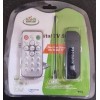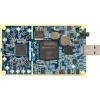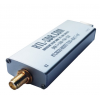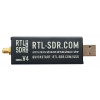Shopping Cart
0 item(s) - R0.00- 3D Printing and Plastic peripherals (8)
- 433Mhz and Lora (9)
-
Amateur Radio (651)
- - Antenna Analyzer (12)
- - APRS (12)
- - ATU (5)
- - CW (1)
- - Digital Modes (9)
- - DMR (4)
- - Echolink (10)
- - Enclosure (13)
- - Eshail-2 (QO-100) (67)
- - GPS (8)
- - iGate (1)
- - Microcontrollers (43)
- - Microphone (1)
- - Power Supply (7)
- - Programming Cable (6)
- - QRP (9)
- - Radio interface (21)
- - Receiver (9)
- - Repeater (4)
- - RF Amplifiers (20)
- - RF Kits (19)
- - RF modules (116)
- - Rotator (1)
- - SDR (75)
- - Spectrum Analyzer (4)
- - SWR (9)
- - Transceiver (59)
- - WSPR (5)
- Antennas and Acc (320)
- Audio and Video (28)
- Bargain Box (1)
- Battery (3)
- Bluetooth (11)
- Cables (37)
- Computer Peripherals (104)
- Connectors (90)
- Data acquisition (1)
- Display (2)
- Electromechanical (25)
- Enclosure (12)
- GPS (6)
- Hardware (3)
- Home Automation (128)
- Inverter (9)
- Liquid (7)
- Lora (8)
- Microcontrollers (119)
- Modbus (3)
- MQTT (14)
- Network Radio (3)
- Networking (8)
- Power (133)
- Power supply (49)
- Radio Interface (17)
- RF Modules (142)
- ROIP (2)
- Satellite (93)
- Security (13)
- Sensor (17)
- Solar (14)
- Test and Measurements (66)
- Tools and Equipment (8)
- VOIP (10)
- Weather (1)
SDRplay RSP1A SDR from 1KHz up to 2 GHz 8MHz spectrum (14Bit resolution) HF,VHF,UHF
Ex Tax: R3,040.00
Add to Compare
SDRPLAY (direct convertion 14Bit) no upconvertion (HF -UHF)
Please check the license details you will need to purchase this unit
(Please note you will need an Amature Radio License to purchase this item)
Software drivers and SDR software for SDRplay (Installation Manual)
Demo Video (click on video to play) and (SDRplay Community Forum)
You will not get a USB cable, antenna leads or any adapters
What do I get when I order an SDRplay?
- The SDRplay unit.
- Instruction documentation and links to popular SDR software
- Free access to Mirics FM/DAB and DVB-T Digital TV software.
- You will not get a USB cable or antenna leads or any adapters.
Technical specification
The SDRplay is a SDR covering the frequency range from 1KHz up to 2 GHz with a 8MHz spectrum view (14Bit resolution) covering the following Bands HF,VHF,UHF

The SDRplay RSP1A is a powerful wideband full-featured SDR which covers all frequencies from 1KHz up to 2 GHz.
All it needs is a PC and an antenna to provide excellent communications receiver functionality. Combined with the
power of readily available SDR receiver software, enjoy all modes of operation while monitoring up to 8MHz of
spectrum at a time. An open API allows developers to create new demodulators or applications around the
platform.
- RF Tuning Range
- The RF tuning range of the SDRplay module is Continuous Coverage from 1KHz – 2GHz
- Front End Filtering
- The front end is protected by a series of passive RF filters.
These filters are automatically selected based on the RF frequency programmed. The filter ranges are shown below:- 12 MHz Low Pass Filter
- 12 – 30 MHz Band Pass Filter
- 30 – 60 MHz Band Pass Filter
- 60 – 120 MHz Band Pass Filter
- 120 – 250 MHz Band Pass Filter
- 250 – 420 MHz Band Pass Filter
- 420 – 1000 MHz Band Pass Filter
- 1000MHz High Pass Filter
- The front end is protected by a series of passive RF filters.
-
Intermediate Frequencies
-
The SDR play module supports the modes of operation:
-
Zero IF for all IF bandwidths
-
Low IF for bandwidths ≤ 1.536MHz
-
-
-
IF Bandwidths
-
The following IF filter bandwidths are supported:
-
200 kHz
-
300 kHz
-
600 kHz
-
1.536 MHz
-
5.000 MHz
-
6.000 MHz
-
7.000 MHz
-
8.000 MHz
-
-
- ADC Characteristics
- 12 bit native ADC
- Sample Frequency 2MSPS - 10.66MSPS
- 10.4 ENOB
- 60dB SNR
- 67dB SFDR
- Connectivity
- Single SMA RF connector
- High Speed USB 2.0 socket (type B)
Narrow Band FM Characteristics
The plots below show the narrow band FM characteristics of the SDRplay module. The plots show the SINAD performance for different narrow band FM frequency deviations. In addition the SINAD Vs Input level is also shown. These measurements are taken at 145MHz


Gain, Noise Figure and IIP3
The tables below show the gain, noise figure and IIP3 data for the SDRplay module. The data is given for each of the main front end gain states. The noise figure and gain data can be used to help calculate whether there is sufficient SNR in the receiver when the tuner LNA is
enabled within the AGC routine. Further information on programming the AGC can be found in the AGC reference note. The data has been split down to show the performance for each of the front end filter configurations.



Gain, Noise Figure and IIP3



Gain, Noise Figure and IIP3


Phase Noise
The tables below show typical phase noise plots for the SDRplay module. An example of the phase noise performance for different frequency coverage areas has been considered.






Front End Filtering
The front end is protected by a series of passive RF filters. These filters are automatically selected based on the RF frequency programmed. The frequency response of the different RF filters is shown.
0 – 12MHz Low Pass Filter
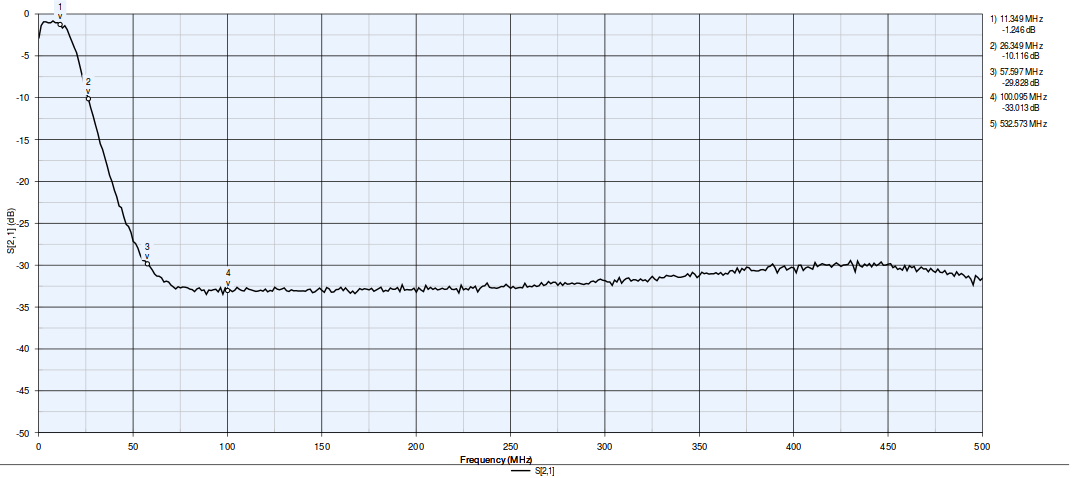
12 - 30MHz Band Pass Filter

30 – 60 MHz Band Pass Filter

60 - 120MHz Band Pass Filter

120 - 250MHz Band Pass Filter

250 - 420MHz Band Pass Filter

420 - 1000MHz Band Pass Filter
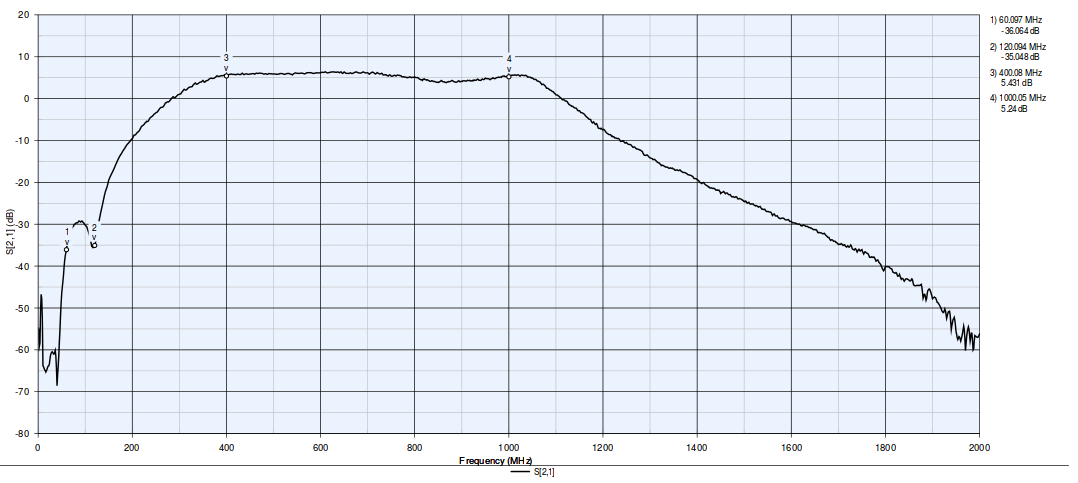
1000 - 2000MHz Band Pass Filter

1) For Windows 7, 8.1, 10 - desktop and tablet) follow steps here http://www.sdrplay.com/starthere.php
2) For Linux follow the steps here http://www.sdrplay.com/gslin2.php
3) For MAC (OSX Yosemite 10.10.5) follow steps here http://www.sdrplay.com/gsmac2.php
4) For Raspberry Pi 2 follow steps here http://www.sdrplay.com/gsrpi22.php
5) For Android follow steps here http://www.sdrplay.com/gsand2.php
Write a review
Your Name:Your Review: Note: HTML is not translated!
Rating: Bad Good
Enter the code in the box below:
Giga Technology © 2025




